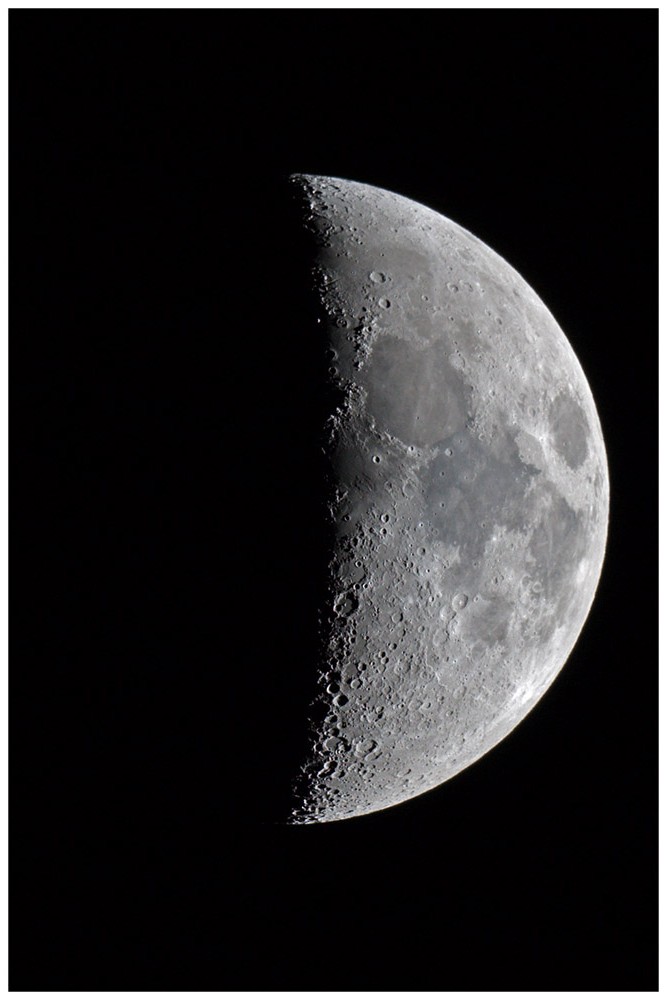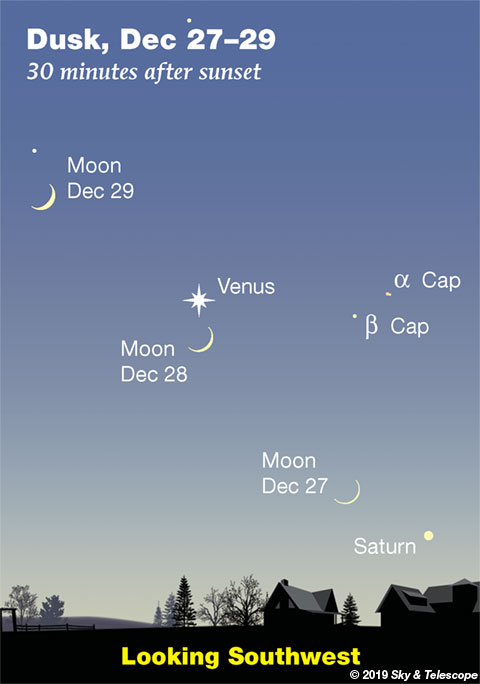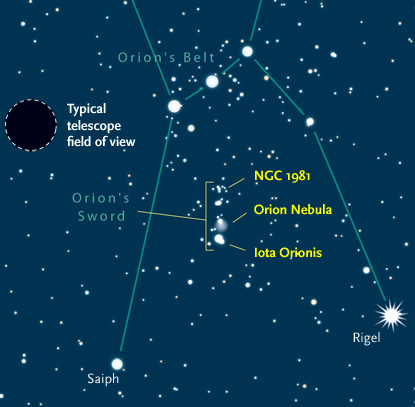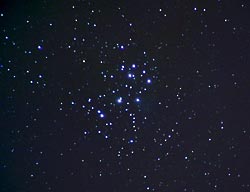
Maybe you just got a shiny new telescope to call your own. Congratulations — you could be on your way to discovering many amazing, far away things in the night sky. Although, most of them are so far and faint that just locating and detecting them can be a challenge! Whether your new scope is a long, sleek tube or a compact marvel of computerized wizardry, surely you're itching to try it out.
Here are three crucial tips for getting started.
First, get your scope all set up indoors. Read the instructions, and get to know how it all works — how it moves, how to change eyepieces, and so on — in warmth and comfort. So you don't have to figure out unfamiliar knobs, settings, and adjustments outside in the cold and dark.
Second, take the scope outside in the daytime and familiarize yourself with how it works on distant scenes — treetops, buildings — to get a good feel for what it actually does. For instance, you'll find that a telescope's lowest magnification (the eyepiece with the longest focal length) gives the brightest, sharpest, and widest views, with the least amount of the wiggles. The lowest power also makes it easiest to find what you're trying to aim at, thanks to that wide field of view. So you'll always want to start off with the lowest power. Switch to a higher magnification only after you've found your target, got it centered, and had a good first look.
Also, if the telescope has a little finderscope or red-dot pointing device attached to it, daytime is the easiest time to "align" it with the main scope. Aim the telescope at a distant treetop or landmark, center that in the view, and then look through the finderscope. Use the finder's adjustment screws to center the crosshairs (or, red dot) on the same treetop. Then recheck that the treetop is still in the center of the main scope's view, to make sure you haven't thrown it off.
Third, be patient. Spend time with each sky object you're able to locate, and really get to know it. Too many first-time telescope users expect Hubble-like brightness and color in the eyepiece — when in fact most astronomical objects are very dim to the human eye. And, our night vision sees almost everything as shades of gray. Much of what the universe has to offer is subtle, and, once again, extremely far away! But the longer and more carefully you examine something, the more of it you'll gradually discern.
On the other hand, the Moon and the naked-eye planets are bright and easy to find. They make excellent first targets for new telescopic observers. Sky & Telescope's This Week's Sky at a Glance has suggestions for both telescopic and naked-eye viewing of the brightest stars and planets.
Here are some suggestions for starting off.
New-Telescope Delight: The Moon
The Moon is one celestial object that never fails to impress in even the most humble scope. It’s our nearest neighbor in space — big, bright, starkly bleak, and just a quarter million miles away. An amateur telescope and a good Moon map can keep you busy forever.

The Moon tonight (December 25, 2019) is in its "new" phase and is hidden in the glare of the Sun. But in a couple days it will be emerging into view in twilight above your southwest horizon, as shown here. Each evening it will appear higher and thicker.
You'll always see its surface features the best — mountains, craters — along the Moon's terminator, the lunar sunrise or sunset line. (See the photo at the top of this page!) The terminator is where the low Sun in the lunar sky casts long black shadows from hills, mountains, and crater walls. The advancing terminator unveils new landscapes day by day when the Moon is waxing, then hides them in darkness day by day when waning.
Bright Planets
You can't miss the bright point of light now in the southwest at twilight. That's Venus. It shines just above the thin Moon on December 28th, as shown above.
Even a small telescope will show Venus's Moon-like phases. Venus currently appears small and gibbous in the eyepiece, because it's nearly on the far side of the Sun from us. It appears dazzlingly bright white because of its intensely sunlit cloud cover. Venus will move higher in the evening sky in the coming months, and this spring it will morph into a strikingly brilliant telescopic crescent.
Most of the other bright planets (Mercury, Jupiter, and Saturn) are currently buried in the glare near the Sun, a bit of bad luck just now. Aside from Venus, the other exception is Mars, which is in view low in the southeast just before dawn. Mars is coming out from behind the Sun from Earth's viewpoint, so it's currently far away and just a tiny little blob even in large telescopes. But wait a while. Next October Mars will make one of its especially close passes by Earth.
As for the other planets? Be patient. All will come around in due time.
More New-Telescope Sights
There's more to the night sky than the Moon and planets, of course. Winter evenings often bring crisp, transparent skies with a grand canopy of stars. But with so many inviting targets overhead, where to point first?

Here's a suggestion. The familiar constellation Orion climbs the southeastern sky these evenings. In its middle, look for the three-star line of Orion's Belt. The Belt is almost vertical as it rises in early evening, and is diagonal (as shown in the chart at right) late at night.
Just a few degrees south of the Belt (that is, a few finger-widths at arm's length) runs a smaller, dimmer line of stars: Orion's Sword. Within it lies the Orion Nebula, a luminous cloud of gas and dust where new stars are forming by the hundreds. It shows pink in most photographs, but to the human eye it's dim gray with a hint of green. The nebula is plain to see in any telescope once you get pointed at it, and so is the tight quartet of stars near its center, known as the Trapezium. Astronomers refer to the Orion Nebula as Messier 42 (M42), and you'll see it labeled that way on star charts. Located about 1,400 light-years away, it's the closest massive star-forming nebula to Earth.
Dim objects like nebulae are best seen when the sky is moonless and really dark, like now. And give your eyes plenty of time to adapt to the dark, the longer the better.
You can use Orion's Belt as a pointer to other things. Extend its line far upward, past the relatively bright star Aldebaran (the orange eye of Taurus, the Bull) and you'll reach the little cluster of stars called the Pleiades. It's about the size of your fingertip at arm's length.

Through binoculars or a telescope at its lowest magnification, the Pleiades cluster shows dozens of stars. Astronomers have determined that the cluster has about 500 in all. Like other star clusters, the Pleiades are held together by their mutual gravity. This one is classed as an open cluster for the stars' relatively uncrowded arrangement. It's nearby as star clusters go, traveling through space as a swarm about 440 light-years away.
Researchers have determined that the Pleiades stars began to shine only about 70 to 100 million years ago. This makes the stars mere toddlers compared to our Sun and solar system, which are 4.6 billion years old. M45’s youthful suns are astonishingly energetic. Alcyone (al-SIGH-oh-nee), the brightest, is at least 350 times as luminous as our Sun. Like the other bright Pleiads it gleams with an intense blue-white light — a sign that it’s unusually hot and massive.
Next Steps in Astronomy
To find much else in the night sky, you'll need to start learning the constellations. They're the key to locating everything fainter and deeper to hunt with binoculars or a telescope — the same way you need to know the continents and countries on a globe of Earth before you can pinpoint individual cities like, say, Milan, Italy. For an easy-to-use constellation guide covering the whole evening sky, use the big monthly map in the center of each issue of Sky & Telescope magazine, the essential guide to astronomy (ahem).
You'll also want a good, detailed star atlas (set of maps), such as the widely used Pocket Sky Atlas; a good deep-sky guidebook; and some practice in how to use the maps to pinpoint the aim of your telescope onto a something too faint to see with your eyes alone. There are certain key tricks to this — see Using a Map at the Telescope.
For more tips on skywatching and how to get the most out of your scope, see our Observing section and Getting Started section.
Whatever else, stick with it! Nobody is born knowing this stuff. Work your way into the hobby at your own pace, finding things to know and do and understand without worrying about everything you don't yet. Life in a big universe is kind of like that.
 0
0








Comments
You must be logged in to post a comment.